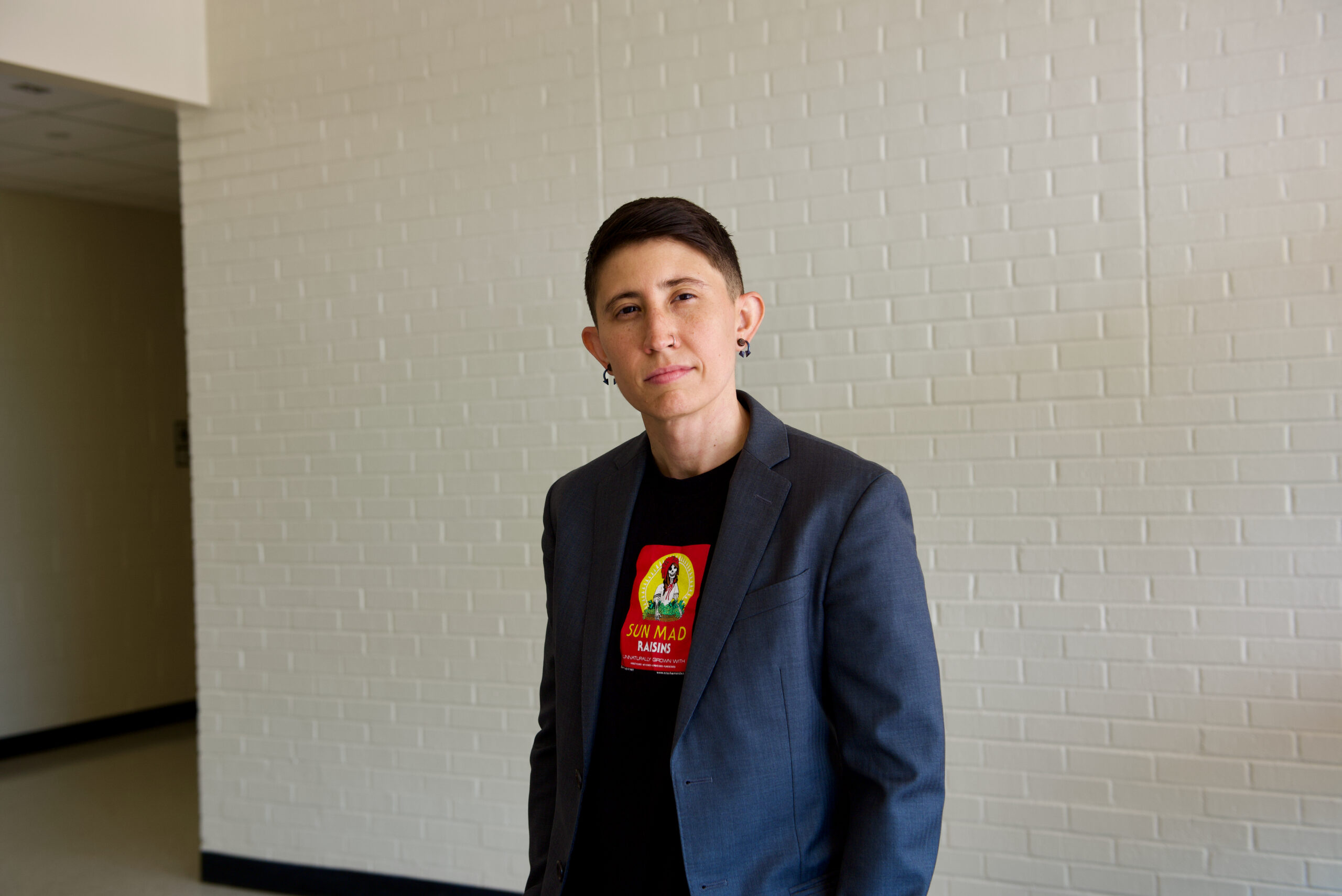An article by UNC Charlotte researcher Andrea J. Pitts and colleagues published in the world’s leading medical journal details how competing interests in academic medicine can harm patient care and perpetuate structural racism.
Published in the New England Journal of Medicine, the article uses a case study approach to explore the tensions found in academic residency clinics, as doctors deal with dual loyalties to their patients and their academic institutions.
Pitts, an associate professor of philosophy, co-authored the article, “Dismantling Structural Racism in the Academic Residency Clinic,” with Rahul Vanjani of the Division of General Internal Medicine, Warren Alpert Medical School, Brown University, Providence, R.I.; and Pranav Aurora of the Department of Psychiatry, SUNY Health Science Center, New York.
A case study of the Young Lords – Puerto Rican and Black political activists in the Bronx who in the early 1970s worked for structural changes to improve patient care – provided context for the authors’ work. The Young Lords exposed systemic arrangements that allowed wealthier patients greater access to experienced physicians, private practices, and continuity of care.
The Young Lords identified antagonisms between patient-centered values and the organizations’ focus on training, research and profits.
“Since residency training began in 1889,” Pitts and colleagues wrote, “it has been challenging to balance the educational mandate to provide excellent training for tomorrow’s physicians (in part by facilitating access to patients for clinical learning) with the societal mandate to provide high-quality care for today’s patients.”
These competing interests have structural implications. Today, about 75% of academic health centers are in underserved communities where most residents are members of racial or ethnic minority groups and who are underinsured or uninsured.
Black patients who are poor and have limited options are less likely to oppose being treated by a trainee than are affluent White patients who can choose where they receive medical care, the authors wrote.
Clinic patients can face long wait times as medical residents consult with their attending supervisors, and can experience poor continuity of care because of the residents’ erratic schedules. The clinics may have inadequate resources for patients with limited English proficiency or insufficient insurance.
“Patients seen by residents,” the authors said, “are more likely than those seen by attending physicians to have concentrations of glycated hemoglobin and low-density lipoprotein cholesterol that do not meet the target levels, to have higher rates of emergency department visits and hospitalizations, and to give lower ratings to their access to health care and provider communication.”
Meanwhile, clinic medical residents and directors say they experience high stress levels.
Additionally, changes in financing and care delivery – such as value-based payment systems and new tax regulations for nonprofit hospitals – increase the pressure for centers to justify their benefit to local communities.
Making the academic clinic model more just and equitable will require awareness, alignment, advocacy, and accountability, the authors said.
Everyone from high-level administrators to frontline workers must recognize structural racism, for awareness to occur.
Alignment involves ensuring physicians’ roles and responsibilities are compatible with patients’ needs, meaning clinic doctors need similar time, space, and prestige as academic researchers. Clinic doctors must take care of patients, supervise medical residents, take part in faculty meetings, and conduct scholarship for academic advancement.
“Improving the quality of clinic care is rarely a priority and is virtually never reflected in a positive light on a physician’s profit-and-loss statement,” the authors said.
Advocacy involves policymakers, who shape the systems that can lead to structural racism. In the area of accountability, policymakers could require the clinics to maintain certain standards and ranges of services and could monitor the relative quality of care patients receive.
Academic health centers need to link local partnerships and expertise to national regulations and standards, and should better engage the community, particularly to address the need to integrate considerations of social determinants of health into medical education, the researchers said.
Community ownership of clinics is an option to consider, the researchers said. This would pair medical knowledge of clinicians with the grassroots knowledge and lived experience of patients and community health workers.
In a long-range potential impact, these changes could encourage more trainees to pursue primary care careers, addressing a critical and urgent national need.
The authors noted instances where doctors and community members have addressed the complicated issues. They pointed to Montefiore Medical Center, where doctors created the Residency Program in Social Medicine; and Chicago’s Community Grand Rounds, a partnership of the University of Chicago, Northwestern University, and community organizations. At Brown University’s internal medicine residency clinic, clinical leaders have advocated for changes in the compensation model.
“The current moment has taught us that discussion about radical change in support of the well-being and betterment of all is possible,” the authors concluded. “Although consistent change has not yet emerged from this discussion, perhaps academic health centers and their residency clinics, in partnership with their patients, can lead the way.”
Words and Image: Lynn Roberson, CLAS Communications Director








